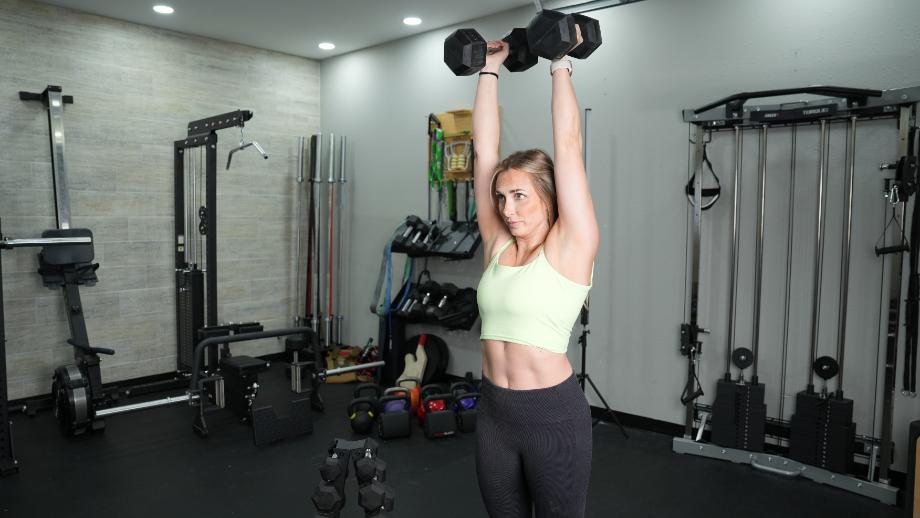We test and review fitness products based on an independent, multi-point methodology. If you use our links to purchase something, we may earn a commission. Read our disclosures.
I wouldn’t be where (or who) I am today without HIIT. That might sound hyperbolic, but I promise it’s not the case.
Before I became an ISSA-certified personal trainer (CPT) and GGR team member, I was stuck in a sedentary lifestyle for a two-year stretch that saw me abandon my workout routine and any semblance of a nutrition plan. I finally woke up when I saw an all-time high of 285 pounds on the scale and saw an unhappy, unhealthy version of myself staring back in the mirror.
Luckily, having my eyes wide open for a second allowed HIIT to enter the picture — and it’s never left. Nearly three years into a transformation journey that included completing the 75 Hard Challenge, I’ve completed hundreds of HIIT sessions using everything from just my body to barbells to StairMasters. Along the way, I’ve learned what to do and, most importantly, what not to do if you want to get the most bang for your heart-pumping buck.
So, if you’re ready to go all-in on going all-out to become your best self, I’m here to guide you with these HIIT workouts for beginners as you embark on your own fitness journey.
What Is HIIT?
High-intensity interval training (HIIT) incorporates short bursts of intense exercise with brief rest or active recovery periods. In other words, it’s the complete opposite of the typical steady-state cardio sessions you might be used to.
RELATED: Steady-State Cardio vs HIIT
On one hand, that makes HIIT more dynamic and engaging than casually walking on a treadmill for 30 minutes. On the other hand, this training modality typically involves multiple types of exercises that challenge your cardiovascular fitness, muscular endurance, core strength, and even your balance.
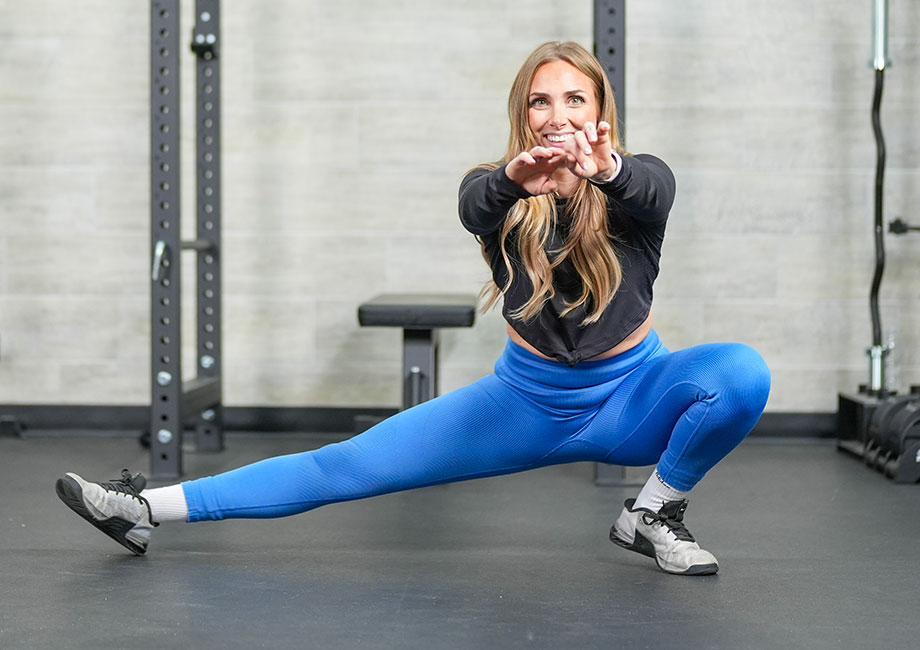
Luckily, HIIT workouts don’t require nearly the same amount of time as low- or moderate-intensity sessions. That’s actually one of their biggest advantages: efficiency. Crank your heart rate up during work intervals, recover as best as possible during rest periods, and repeat. Do that for 20 to 30 minutes with bodyweight exercises, your favorite cardio machine, or a pair of the best dumbbells, and just about every muscle in your body should be begging for a date with the massage gun when you get home.
RELATED: Best Massage Guns
3 HIIT Workouts for Beginners
The beginning of your fitness journey can feel overwhelming. But trust me, it’s also an exciting time for muscular gains and self-growth. As a CPT, longtime rugby player, and dedicated #gymrat, I used my knowledge and experience to design three dynamic HIIT sessions you can incorporate into your weekly routine.
Before you fire up your fitness tracker, here are a few expert tips and words of wisdom that will help you enjoy safe and effective workouts:
- Always start with a warm up. I recommend a combination of common warm-up exercises like high knees, jumping jacks, and butt kicks, or even 5-10 minutes on a cardio machine.
- Push yourself according to your fitness level: Don’t compare yourself to anyone else, and rest if you get dizzy or lightheaded.
- Modify the exercises, rest periods, and work intervals, if necessary.
- Always end with a cool down, such as stretching, foam rolling, or mobility exercises.
RELATED: Cool Down Exercises
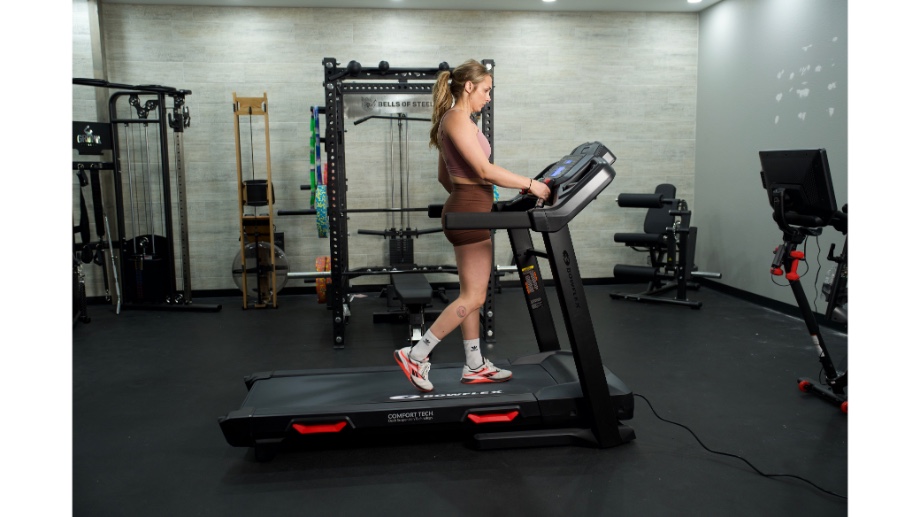
Now, let’s dial up the intensity to burn calories, build confidence, and become better one HIIT session at a time!
Beginner Bodyweight HIIT Workout
No equipment? No problem. This beginner-friendly HIIT training session requires nothing but your body and your brain (and maybe a smartwatch to keep track of time).
However, just because you don’t need a kettlebell or cardio machine doesn’t mean you should take it easy. This full-body HIIT workout should leave you feeling exhausted from head to toe—without a single piece of equipment. Try to follow a 1:1 work-to-rest ratio, but feel empowered to take a few extra seconds of rest based on your fitness level.
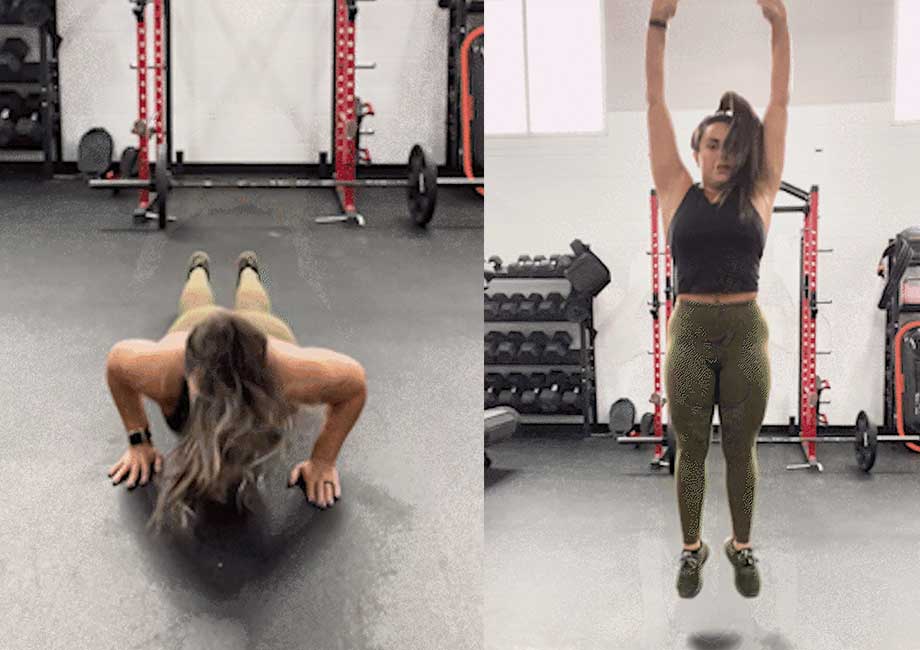
Instructions: Perform each HIIT exercise consecutively to complete one round of the circuit, taking the allotted rest period in between. Rest for 2 to 3 minutes, then repeat for 2 to 3 rounds.
| Exercise | Work Interval | Rest Period |
| Squat | 30 sec. | 30-60 sec. |
| Push-Up | 30 sec. | 30-60 sec. |
| Alternating Lunges | 30 sec. | 30-60 sec. |
| Burpees | 30 sec. | 30-60 sec. |
| Glute Bridge | 30 sec. | 30-60 sec. |
| Mountain Climbers | 30 sec. | 30-60 sec. |
RELATED: At-Home Bodyweight Workout
Beginner Kettlebell HIIT Workout
I can truly say the kettlebell is one of my favorite and least favorite pieces of equipment. I say that purely out of respect for how effective it is at putting every muscle, ligament, and tendon to work.
RELATED: Kettlebell HIIT Workout
This beginner-friendly session combines strength training with a cardio workout for the ultimate one-two punch. I recommend starting with a lighter weight for the first round so you can get comfortable with each movement. Then, choose a kettlebell that’s challenging but not overly so that you can’t perform the exercises without compromising your form or safety.
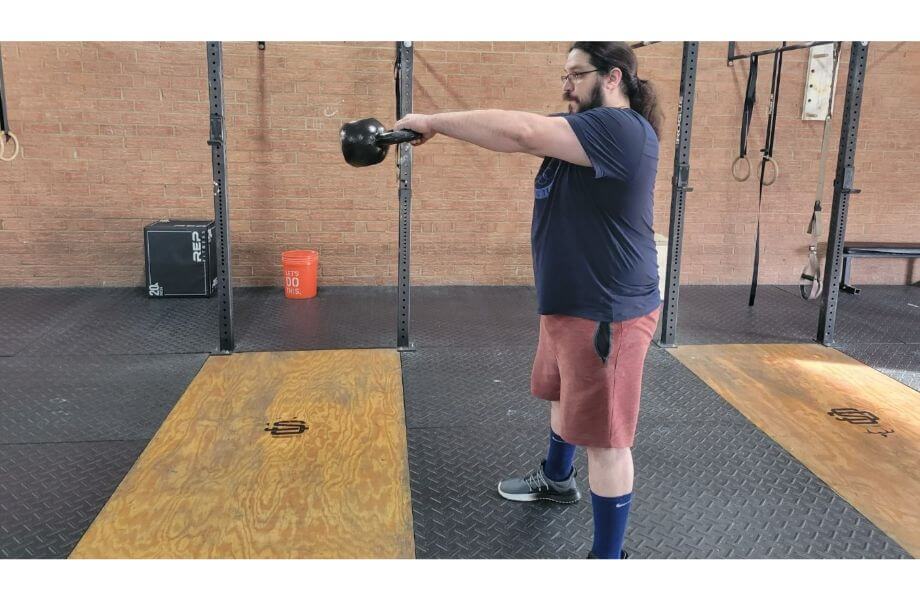
Instructions: Perform each exercise consecutively to complete one round of the circuit, taking the allotted rest period in between. Rest for 2 to 3 minutes, then repeat for 2 to 3 rounds.
| Exercise | Work Interval | Rest Period |
| Kettlebell Swings | 30 sec. | 30-60 sec. |
| Goblet Squat | 30 sec. | 30-60 sec. |
| Russian Twist | 30 sec. | 30-60 sec. |
| Alternating Lateral Lunges | 30 sec. | 30-60 sec. |
| Overhead Press | 30 sec. | 30-60 sec. |
| Squat Hold | 30 sec. | 30-60 sec. |
RELATED: Best Kettlebells
Beginner Dumbbell HIIT Workout
If you have a pair of adjustable dumbbells at home, you’re set up for successful HIIT sessions since you can make quick changes on the fly. If you have traditional dumbbells, it might be a little more challenging to stick to the time intervals if you have to go up and down in weight. I recommend having a few different pairs laid out so you can be as efficient as possible.
In addition to being downright fun, dumbbell workouts offer the additional benefit of unilateral training. So, if you’ve been dealing with any muscular imbalances, some of these exercises can help get things evened out again (over time, of course).
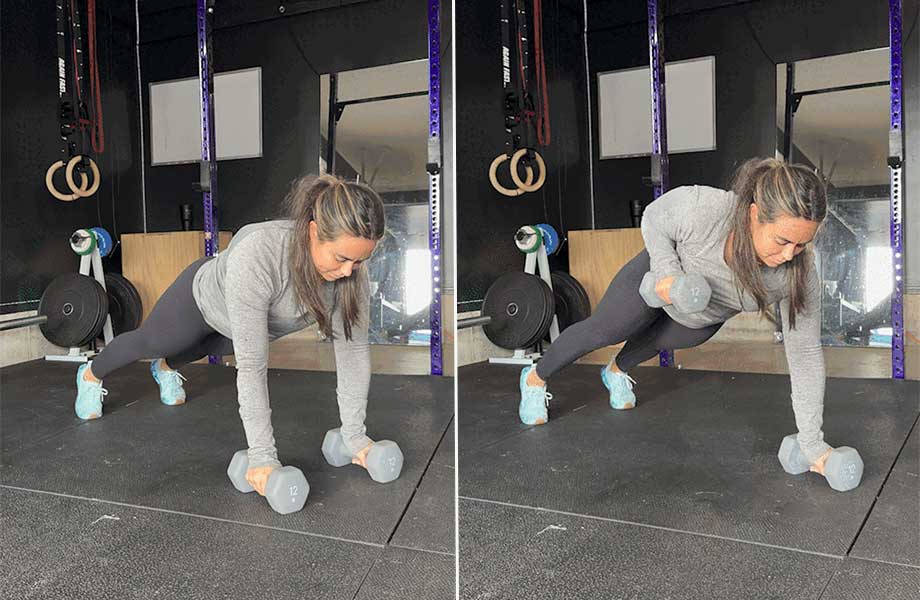
Instructions: Perform each exercise for the recommended work interval. Take a rest period, then repeat two more times before moving to the next exercise. Rest for 2 to 3 minutes after completing the circuit, then repeat.
| Exercise | Work Interval | Rest Period |
| Thrusters | 20 sec. | 20-40 sec. |
| Renegade Row | 20 sec. | 20-40 sec. |
| Alternating Lunges | 20 sec. | 20-40 sec. |
| Shoulder Press | 20 sec. | 20-40 sec. |
| Farmer’s Carry | 20 sec. | 20-40 sec. |
| Step-Up | 20 sec. | 20-40 sec. |
RELATED: Best Adjustable Dumbbells
Benefits of HIIT Workouts
From their fat-burning upside to their muscle-building potential, interval workouts offer a wealth of advantages for people of all shapes, sizes, and abilities. As a CPT and HIIT advocate, I’m a firm believer that you can make excellent progress toward your fitness goals by including them in your routine.
Here’s why:
You Get a Full-Body Workout
Whether you’re using an elliptical or a pair of dumbbells, you can train your lower body, upper body, core, and cardio simultaneously. Even a 15-minute HIIT workout can leave your hamstrings feeling just as taxed as your delts — if done at the right intensity.
The key is ensuring you have sufficient exercise variety to get that head-to-toe experience. Because HIIT is so customizable, you have nearly endless options to attack particular muscle groups, giving you the power to put your full body to work.
RELATED: Full-Body Dumbbell Workout
HIIT Can Help With Weight Loss
As someone who embarked on a 75-pound weight-loss journey, I can vouch for HIIT’s effectiveness. Don’t just take my word for it; research backs up the efficacy of going the high-intensity route.
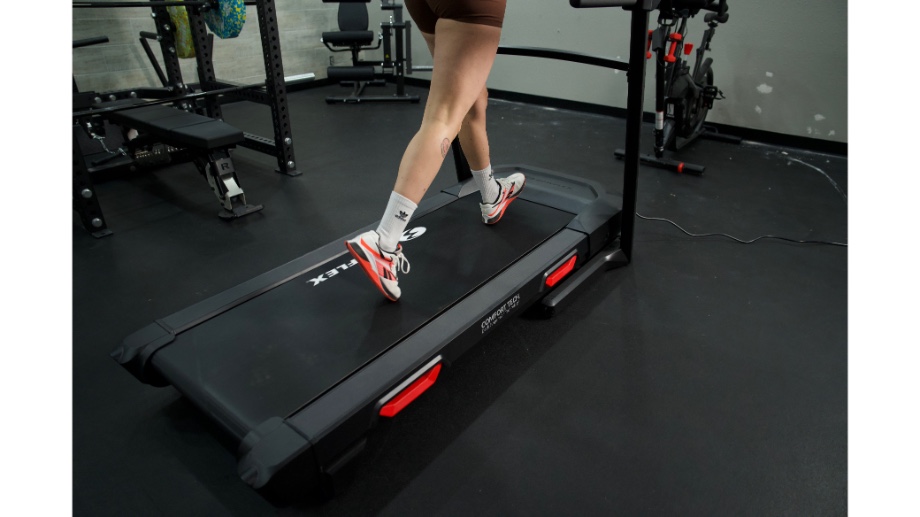
According to a study published in the Journal of Obesity1, high-intensity intermittent exercise has been shown to lower insulin resistance and enhance skeletal muscle fat oxidation. Furthermore, research shows it can result in modest reductions in subcutaneous and abdominal body fat1.
RELATED: 13 Tips on Breaking a Weight Loss Plateau
No Equipment (And Less Time) Required
HIIT frees you from spending your next paycheck on expensive equipment or carving out huge chunks of time to train. You can complete a fast-paced Tabata workout with nothing but your body weight and still have time to check off other items on your to-do list.
Just remember that less training time = higher intensity when you are working.
RELATED: Benefits of Tabata
Adaptable to All Fitness Levels
The best HIIT workouts will leave you feeling absolutely drained yet still motivated to crush your next session. Of course, my version of “drained” likely feels much different than yours—and that’s just fine!
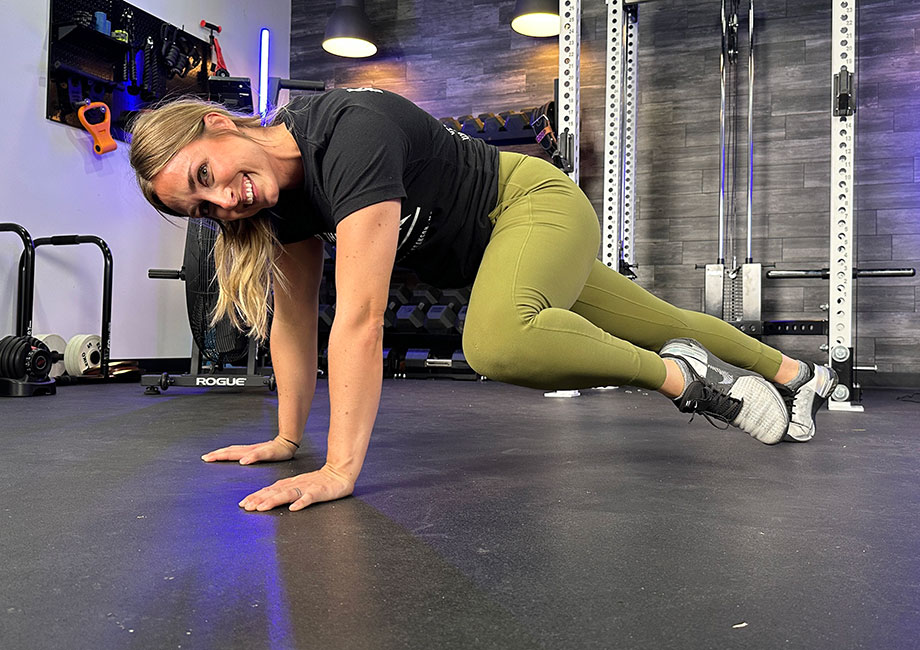
The term “high-intensity exercise” is completely relative. Push yourself based on your fitness level, paying attention to anything that causes you pain or any stumbling blocks. Make adjustments such as choosing low-impact exercises or lengthening the rest periods so you can complete the workout and continue progressing in your journey.
RELATED: Circuit Training Exercises
Common HIIT Workout Mistakes
Based on my own experience and training different types of clients, here are several common mistakes you want to avoid to stay on the HIIT track for the long haul:
- Going too intense, too soon: Don’t burn out on the first exercise or first round of a circuit. It’s easy to empty the tank out of excitement, but that won’t lead to the results you’re looking for.
- Focusing on time or reps over form: Safety should always be your priority. Never jeopardize your joint health by trying to be a workout warrior. Maintain proper form at all times, even if that means sacrificing a few reps during your work interval.
- Not taking sufficient rest days: HIIT workouts may not last long, but they can leave you feeling quite fatigued. As a beginner, take at least one or two full rest days per week so you can recover, especially if you’re performing multiple HIIT sessions during that span.
- Neglecting hydration: Prepare to be dripping with sweat in a short period of time. Also, prepare to stay properly hydrated by having a water bottle and electrolytes on hand so you can perform at your best.

RELATED: Best Electrolyte Powder
HIIT Workouts for Beginners: Final Thoughts
In an industry filled with fads and catchy acronyms, HIIT is one of the pillars you can trust. I’m certainly not the first person who’s experienced its muscle-building and fat-burning benefits, and you definitely won’t be the last.
What’s great about this training method is that it’s impossible to run out of ways to switch things up. At the beginning of your HIIT journey, you can try different exercises, work-to-rest ratios, and equipment to figure out what works best for you. As you gain confidence and lose body fat, you can crank things up another notch to keep providing your mind and body with new challenges to overcome.
HIIT Workouts for Beginners: FAQs
How long should a HIIT workout be for beginners?
A beginner-friendly HIIT session should last between 15 to 20 minutes. This should provide a sufficient challenge without causing too much stress for someone new to working out.
What is a good HIIT ratio for beginners?
As a CPT, I recommend beginners start with a 2:1 work-to-rest ratio. If that feels too easy, reduce the rest time so that it’s a 1:1 ratio.
How often should a beginner do HIIT workouts in a week?
Beginners can perform HIIT workouts two to three times per week. However, make sure to use active recovery techniques like foam rolling and stretching, along with taking at least one to two rest days, to ensure adequate recovery.
References
- Boutcher S. H. (2011). High-intensity intermittent exercise and fat loss. Journal of obesity, 2011, 868305. https://doi.org/10.1155/2011/868305
Further reading

Check out our Spirit treadmill reviews for the inside scoop on these well-built machines. Read more

Compared to traditional deadlifts, sumo deadlifts may be friendlier on the lower back and easier for taller people. I give my top CPT tips on how to do them. Read more

Our ALOHA Protein Shake Review covers everything you need to know about this plant-based shake, taste-tested and analyzed by our fitness and nutrition experts! Read more

Eggs are a high-protein food, but do you know exactly how many grams of protein in an egg? We’ll share the answer, plus the benefits of eating eggs. Read more

